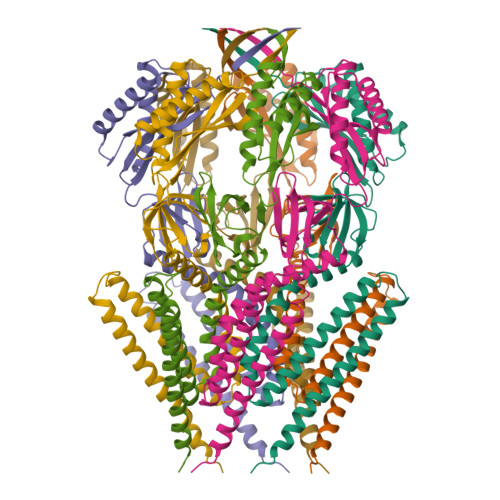Structure and molecular mechanism of an anion-selective mechanosensitive channel of small conductance
Zhang, X., Wang, J., Feng, Y., Ge, J., Li, W., Sun, W., Iscla, I., Yu, J., Blount, P., Li, Y., Yang, M.(2012) Proc Natl Acad Sci U S A 109: 18180-18185
- PubMed: 23074248
- DOI: https://doi.org/10.1073/pnas.1207977109
- Primary Citation of Related Structures:
3T9N, 3UDC - PubMed Abstract:
Mechanosensitive (MS) channels are universal cellular membrane pores. Bacterial MS channels, as typified by MS channel of small conductance (MscS) from Escherichia coli (EcMscS), release osmolytes under hypoosmotic conditions. MS channels are known to be ion selective to different extents, but the underlying mechanism remains poorly understood. Here we identify an anion-selective MscS channel from Thermoanaerobacter tengcongensis (TtMscS). The structure of TtMscS closely resembles that of EcMscS, but it lacks the large cytoplasmic equatorial portals found in EcMscS. In contrast, the cytoplasmic pore formed by the C-terminal β-barrel of TtMscS is larger than that of EcMscS and has a strikingly different pattern of electrostatic surface potential. Swapping the β-barrel region between TtMscS and EcMscS partially switches the ion selectivity. Our study defines the role of the β-barrel in the ion selection of an anion-selective MscS channel and provides a structural basis for understanding the ion selectivity of MscS channels.
Organizational Affiliation:
Key Laboratory for Protein Sciences of Ministry of Education, Tsinghua-Peking Center for Life Sciences, School of Life Sciences, Tsinghua University, Beijing 100084, China.


















